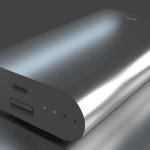Instant cameras are great add-ons for events like birthdays, weddings, and the likes. Besides that, they also make great gifting ideas, especially during the holiday season. But at the end of the day, you must consider factors like film cost, photo quality, size, among many other things. In this post today, we’ll explore what you need to check before buying an instant camera. So, let’s get started. But first,
Here are the 7 things to check before buying a power bankPrint photos like a pro with these affordable photo printers
1. Photo Quality and Size
One of the first things you need to keep in mind while buying an instant camera is that the photo quality will be nowhere near the photos printed by a laser printer or printers in general. Depending on the camera, the photos printed can be a little darker or less saturated. More importantly, they are not as sharp as regular digital photos. Nevertheless, a few instant cameras are out there that churn out almost natural-looking photos, irrespective of the film type. For example, the Fujifilm Instax Mini 90 and the Lomography Lomo’Instant Automat are touted to deliver some natural-looking photos compared to some of their counterparts. The night photos are also well-lit. Secondly, you will have to consider the size of the photographs as well. The photos are a little bigger than regular credit cards for most parts and are perfect for scrapbooks, notice boards, or magnetized objects for the fridge. The Instax films are available in three sizes—Mini, Square, and Wide. If we talk numbers, mini-film measures 2.21x 3.34-inches. If you want gloriously larger prints, then the Polaroid cameras are the ones you would want to check out. For instance, the Polaroid Originals OneStep+ camera delivers 4.25 x 3.46-inch prints.
2. Zink vs Instax Film
The film technology is another attribute you should consider while buying an instant camera. Currently, there are three kinds of films used in popular cameras. Fujifilm’s Instax camera range uses Integral film, commonly referred to as Instax films, while cameras such as the Kodak Smile employs Zink photo paper. Polaroid cameras like the OneStep 2 uses i-Type film. So, what differences does the film type bring? Integral films have emulsion and developing dyes on the sheet, while the developing & fixing chemicals are stored at the film’s bottom. That’s why Instax films have thick borders. On the other hand, Zink (or Zero Ink) photo paper holds layers of ink on the paper itself. When the shutter button is pressed, a pressure-based process mixes the ink around to produce the photos. Unlike Instax photos, Zink prints resemble traditional prints and don’t have a thick border around them. However, the photos take time to develop. Plus, Zink-based instant cameras are slower than Instax cameras. On the upside, Zink photo paper is durable, waterproof, and smudge resistant and they tend to have a wider range of colors. Polaroid uses a different tech to print the i-Type film for photos with slightly muted colors. However, Polaroid films are affected by temperature. That’s why cameras like the Now have a long protective film that rolls out when you click a photo. At the same time, Polaroids take longer to develop. On the upside, they bring home the retro vibe. Long story short, your choice of instant camera will dictate the type of film that you get. However, if you are looking for more natural-looking photos, then the Instax cameras cut.
3. Film Costs
Naturally, the cost of the film depends on the film type and the camera you choose. For example, a 20 sheet-pack of classic film for the Instax Mini 9 cost around $13.22, and a photo will cost you a little over $0.50. Even if the price of the pack shoots up, it will hover around a dollar at most. Again, the price will vary depending on the type of film. For example, a twin-pack of Instax Rainbow film will set you back by $18.99. Meanwhile, a pack of 50 Zink photo paper for the Polaroid Smile costs around $24.85, thereby costing you $0.50 per photo. The difference is more prominent in the i-Type film used in Polaroid OneStep+ will set you back by close to $2 for a single print. Woah, right? Note: This calculation is based on the prices in August 2021.
4. Extra Features: Self-Timer and Exposure Controls
Apart from the cost and the type, check out the extra features when buying an instant camera. Today, most cameras are point-and-shoot cameras which makes the job easier, especially if you plan to buy an instant camera for your kid. That said, the extra features like auto exposure control, built-in flash, autofocus, and selfie timer add to the experience. Plus, some cameras also come with extended storage if you want to have digital storage. For instance, cameras with self-timer like the Lomo’Instant Automat or the Instax Square SQ1 (see Instax Square SQ1 vs Instax Mini 11) lets you take selfies. The fun part is that these cameras also pack a nifty selfie mirror. Another feature that you should look out for is automatic exposure controls. Cameras like the new Instax Mini 11 and the Polaroid Go come with the said feature. This means you won’t have to change the exposure settings manually. For those unaware, the older Mini 9 had different exposure settings for the sunny and cloudy days.
5. Form Factor and Ease of Use
But at the end of the day, you will want a camera that is both sleek and slim. But, again, that depends on the type of film used. Generally, Zink tech cameras such as the Canon Cliq Ivy and the Kodak Smile are slimmer than their counterparts. As opposed to it, the new Polaroid Now is a tad bulky, which makes it a little difficult to hold, especially for small children. Then there are cameras like the Instax Mini 11 or the new Polaroid Go which walks the fine line between sleek and bulky instant cameras.
Lights, Camera, Smile
The thing about instant cameras is that it’s not just a one-time purchase like digital cameras. Since you end up printing almost every single photo, the cost adds up in the long run. If you want to use the camera at casual events, then the Instax Mini 11 is a good pick and the cost per print is decent. However, if you are in the mood to experiment, check out cameras like Lomography Lomo’Instant Automat. It comes with a bunch of colored filters to spice up regular photos. It relies on instant film and delivers better results than the other cameras in its league. But if you want your hand on classic Polaroids prints, you know what to do. The above article may contain affiliate links which help support Guiding Tech. However, it does not affect our editorial integrity. The content remains unbiased and authentic.











